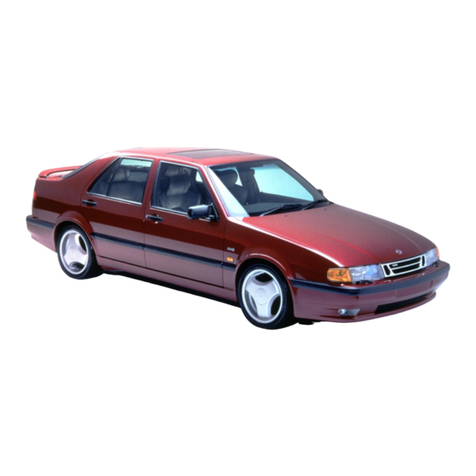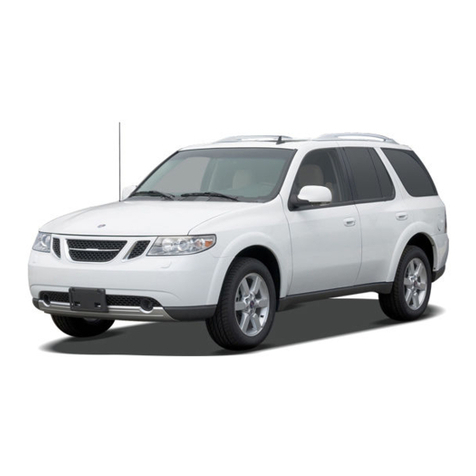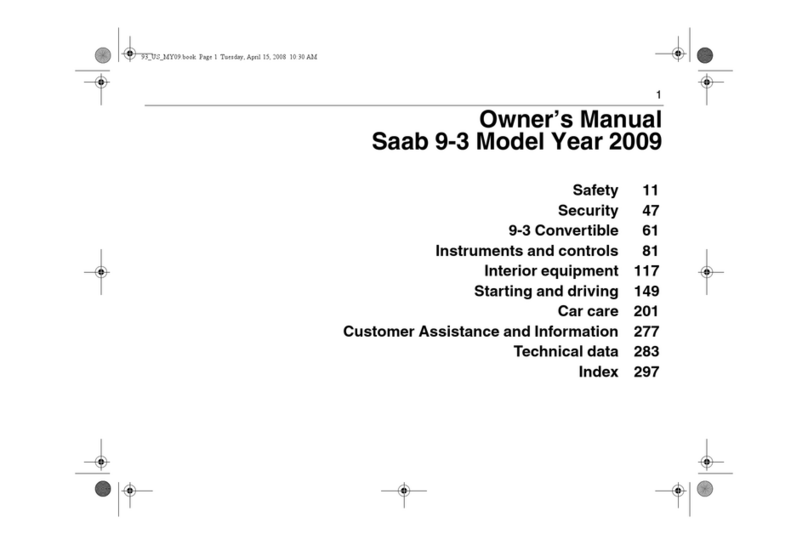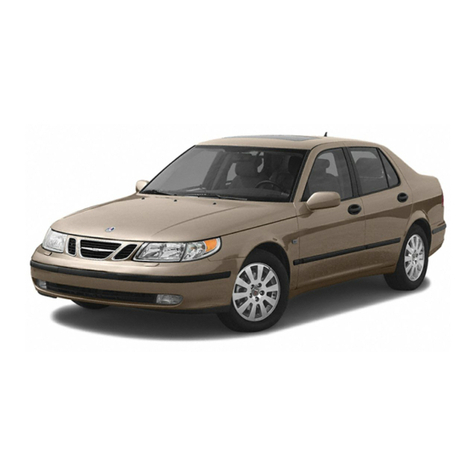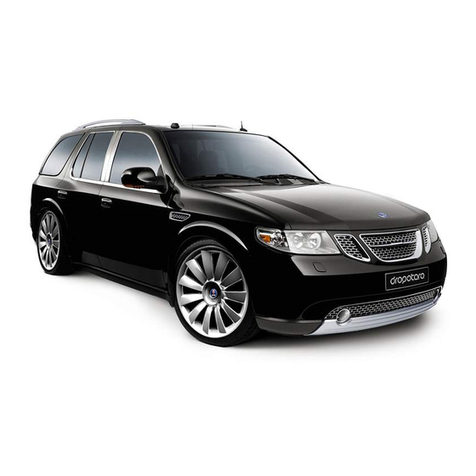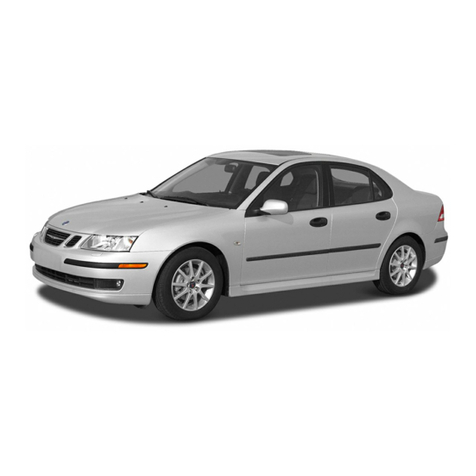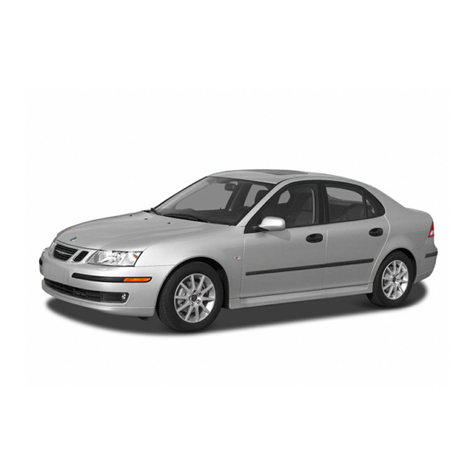2
Introduction
Thismanualprovidespracticalguidanceon
driving and caring for your Saab.
The Saab 9-3 is available with a 2.0l
turbo-engine, 185 hp or 205 hp or a 2.3l
turbo-engine, 230 hp.
Although the manual describes the most
important differences between model vari-
ants, it does not include precise specifica-
tions of the different variants. Some differ-
ences also occur to meet special legal
requirements in different countries.
Importation and distribution of Saab auto-
mobiles, spare parts and accessories are
handled exclusively by General Motors of
Canada Limited in Canada and by Saab
Cars USA, Inc. in the U.S.A.
We recommend that you read through the
manualbeforetaking the caroutforthefirst
timeandthatyoukeepitinthecarforfuture
reference.
To find a specific item, use the overviews
given on pages 3-6. A list of contents is
givenatthebeginningofeachsectionofthe
manual, and there is also a comprehensive
index at the back of the book.
Supplied with the car is a Warranties and
Service Record booklet and a tire warranty
folder which specifies the regular mainte-
nance to be carried out. The book also con-
tains important warranty conditions.:
Since the policy at Saab is one of continual
improvement, we retain the right to incorpo-
ratemodificationsandtoalterspecifications
during production without prior notice.
Ifyouhaveanyqueriesconcerningyourcar,
its equipment, the warranty conditions or
the like, your Saabdealer willbe pleased to
help.
Best wishes,
Saab Automobile AB
The fitting of accessories that are not approved
by Saab Automobile AB can damage other parts
of the car.
The specifications, design particulars and illus-
trations included in the manual are not binding.
WARNING
WARNINGtextswarnagainstthedanger
of injury if the specified instructions are
not followed.
NOTE
NOTE texts warn of potential damage to
the car if the recommendations are not
followed.
IB730


